John Hurrell – 12 July, 2023
When pondering van der Ploeg's show, the question arises of whether one should abandon its overt formalism, and interpret the motifs solely as social signs by being indifferent to geometric elegance as their prime motivation. The vertical rounded bars with circles above them might be interpreted as cyphers for armless human figures standing beneath round thought balloons, or enlarged dotted ‘i's as icons indicating available disseminatable information.
Van der van Ploeg is well known in this country for his geometric wall murals and intricate grid canvases that use three to eight unmodulated colours and two sharply defined motifs. The murals tend to expand or swell horizontally, and the canvases optically contract, pulse or twitch.
This second exhibition at the recently opened Sumer gallery has a title that ‘nods’ to the Josef Albers painting series, Homage to the Square, and the included circles possibly ‘wave’ to the Julian Dashper exhibition currently on at Lett.
Van der Ploeg’s small canvases are lined up on three of the walls. They deal with the effect of the field colour on the dominant figures contained within it that are positioned within rows of vertical bars. In particular, the tensions of tone and chroma and how these qualities affect the stacked up geometric forms in terms of clarity: the perception of those shapes against their immediate background.
These rectangular canvases are structured so that the circles and flat cylindrical shapes (‘grip’ motifs that refer to the handles cut in banana boxes) are positioned descending—with three intact columns in the centre, flanked by two outer half-columns. The circles and cylinders are mixed or by themselves, creating different vertical pressures and releases. Van der Ploeg exploits varied (carefully chosen) colour values and hues—and applied monochromatic, dappled or smudgy textures—that affect the pristine straight or curved edges.
In these rows of vertically sliding stacks van der Ploeg manipulates horizontal tensions through chromatic balance or asymmetry—or playing inversion against upright ‘normality’. You enjoy comparing the related elements, and experiencing their physicality, be that delicate or strident.
The thirteen canvases are far more complex and varied than what they initially might seem. Some have alternating coloured borders for the columns; others don’t. A few revel in positive/negative interaction or have a harsh optical ‘bounce,’ generating very faint after-images. All focus on shape as a kind of downward pulling weight that nudges the sides as well.
One canvas work quite different from the others is Painting No. 22-62, a work in the front window where the circles are gridded and not in descending columns. Here the empty linear discs and black orbs are organised around a sloping bottom-left to top-right corner axis. Under this diagonal the circle colour is black within the bottom righthand side. This angular tension seems to reference the angular morphological dynamics of van der Ploeg‘s mural on the gallery’s outside Beach Rd wall. In the canvas, an isosceles ‘triangle’ of black discs is holding up a larger white one; in the street mural, a spiky dark purple right-angled triangle is pressing downward, subtly squashing the pale windowed triangle against the footpath.
Inside the gallery, the remaining large work, Wallpainting No. 536, is far less intricate, being boldly muscular and very imposing: taking up an entire wall. Two rows of huge delineated circles dominate, five in each. The top row has two discs blacked out (but spread apart); the bottom one, one. Being positioned against a doorway on the left cramps it a little, although the two dark orbs at the far end generate a pressured tension against the adjacent corner.
When pondering van der Ploeg‘s show, the question arises of whether one should abandon its overt formalism, and interpret the motifs solely as social signs by being indifferent to geometric elegance as their prime motivation. The vertical rounded bars with circles above them might be interpreted as cyphers for armless human figures standing beneath round thought balloons, or enlarged dotted ‘i’s as icons indicating available disseminatable information.
As for Wallpainting No. 536, is it a wild extension of the above ‘reading’ of the canvases? Could those empty circles not just be thoughts but also parallel universes, hovering in space and time, and the black ones, future or past variations, accessed via tunnels? A complex cosmic theory involving many simultaneous realities, with never one ‘universe’ dominating.
John Hurrell


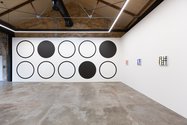
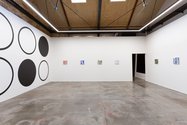
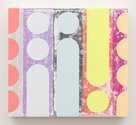
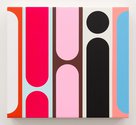
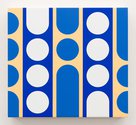
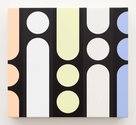
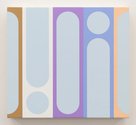
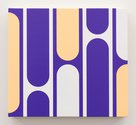
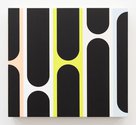
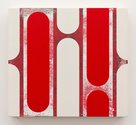
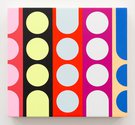
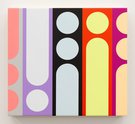


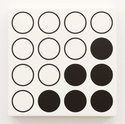

 Advertising in this column
Advertising in this column Two Rooms presents a program of residencies and projects
Two Rooms presents a program of residencies and projects



This Discussion has 0 comments.
Comment
Participate
Register to Participate.
Sign in
Sign in to an existing account.